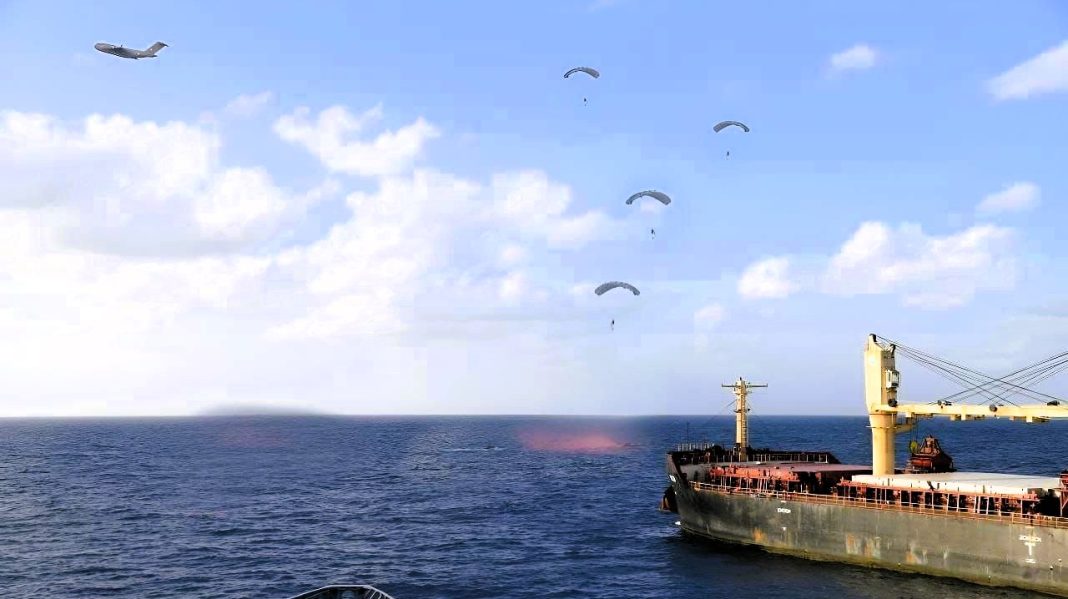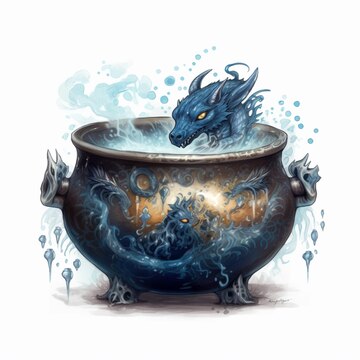
Pic Courtesy: Internet
Ritu Sharma is a journalist, with a Master’s Degree in Conflict Studies and Management of Peace from the University of Erfurt, Germany. Her areas of interest include Asia-Pacific, the South China Sea, and Aviation history. She has been writing on subjects related to defence, foreign affairs, and nuclear technology for the last 15 years. She has written for PTI, IANS and The New Indian Express. Presently she is writing for the EurAsian Times.
Her article on recent Joint IAF and IN operation at high sea was published on 18 Jan 2024 on “The EurAsian Times”.
(Besides the quotes, the views of the author are her own)
No Propaganda-Laced Video! Filipino Expert Mocks China, Says Indian AF-Navy Ops Show ‘Who Is The Boss’
By Ritu Sharma -March 18, 2024
While the Chinese PLA Navy, despite its increasing size, is still working towards becoming a true blue-water navy capable of operating much beyond its shores, the Indian Navy and the Indian Air Force pooled their resources to paradrop marine commandos from Boeing C-17 Globemaster to rescue a hijacked merchant vessel 1400 nautical miles from the Indian shores.
The message was loud and clear that India is the ‘First Responder in the Indian Ocean Region.’
It was the first insertion of marine commandos through airdrop on high seas. A rescue right out of Hollywood flick Captain Phillips, the Indian forces executed the anti-piracy operation on the high seas that unfolded for over 40 hours.
Indian Navy’s stealth-guided missile destroyer INS Kolkata intercepted a merchant vessel, MV Ruen, which was hijacked by Somali pirates on December 13, 2023. The pirates had sailed in the ship to conduct more acts of piracy when they were stopped by the INS Kolkata.
The emboldened pirates opened fire at INS Kolkata and, in the reckless hostile act, shot down a drone launched from the destroyer. This set in motion a high-voltage anti-piracy mission that underscored that the Indian Navy is not to be trifled with.
INS Subhadra patrol vessel, maritime patrol aircraft P-8I, and a high-altitude long-endurance drone joined the mission, while an IAF’s C-17 took off from India with the elite marine commandos (Marcos) of the Indian Navy. It flew for 10 hours and carried out a precision airborne drop of two Combat Rubberised Raiding Craft boats along with the Indian Navy Marcos trained in paradrop.
The paradrop is difficult in the best of circumstances. However, it becomes extremely challenging on high seas because sea and air conditions impact accuracy. The hazard of parachuting into water is always present.
The Indian marine commandos undergo regular training for para jumps with the Air Force; however, this is the first time they have been para-dropped so far away from the Indian coast.
The Marine Commandos boarded the bulk carrier MV Ruen and successfully disarmed the 35 pirates on the ship to successfully rescue 17 crew members on board.
The operation, in addition to underscoring the Indian Navy’s capability to defend maritime laws in its area of dominance from the Gulf of Aden in the West to the Malacca Straits in the East, also highlighted the growing cohesiveness of the Indian Armed Forces to carry out joint operations with finesse.
“IAF works closely not only with surface forces (Army and Navy) but also other agencies like NDMA (National Disaster Management Agency) and NSG (National Security Guards) etc, for induction and insertion of troops and special forces. Depending on the type of load (men and material), distance from the launch base, and method of induction/insertion (landed, para drop, or slithering), the appropriate aircraft is decided. A detailed planning has to be done for such operations,” former IAF Vice Chief Air Marshal Anil Khosla (retired) elaborated to the EurAsian Times.
“Prevailing ground environment is a very important factor. The airspace around the drop zone or landing area needs to be sanitized to rule out any anti-aircraft threat. These types of joint operations have been done in the past and will be carried out in the future as and when needed,” Air Marshal Khosla added.
The Indian Navy’s anti-piracy operations have earned accolades from across the globe. Although it has yet to confront Houthi rebels, it has been one of the first responders to multiple merchant vessels that have been impacted.
The incident has been widely covered in regional countries. A maritime security expert from the Philippines, Collin Koh, said obliquely, referring to China: “A net security provider shows its mettle with air force-navy integration in a real-life security contingency. It beats somebody else who only loves to publish flashy, propaganda-laced videos.”
Comparison To The Green-Water PLA Navy
When the Indian Navy is compared to the PLA Navy, the number of warships in the Chinese Armada is discussed. However, the Indian Navy’s blue water capabilities are only reflected in the Chinese Navy’s blue water ambitions.
Despite having the world’s biggest naval fleet, over 340 warships, the PLA Navy has been regarded as a green-water navy, operating mostly near the country’s shores. However, by augmenting its ship-building capability, it is expected to bloom into a true-blue-water navy by 2050.
China’s “Defence White Paper 2019” mentioned that the PLA is speeding up its transition to “Far-Seas Protection” as its maritime interests are growing. Hence, securing strategic sea lines of communication is becoming imperative for Chinese interests.
This has also seen the PLA-Navy increasing its footprints westwards. China is aware of the Indian Navy’s prowess and the advantage that India’s geographical location provides it. This is why China has not provoked India at sea, as it lacks the capability.
However, China is increasing its reach by building an overseas base. Besides Djibouti and Ream naval base in Cambodia, it is actively scouting for potential locations for military outposts. China’s foothold in Maldives, in the Indian backyard, is therefore concerning for New Delhi.
India has sought to counter this loss by building a naval air base in the Lakshadweep Islands group. The Indian Isles, located in the Arabian Sea, is just 507 kilometers from the Maldives and is seen as an alternative to the Maldives. The ramping up of facilities on the island will mean that soon, the Indian frontline fighter jets will roar in the Western part of the Indian Ocean.
India has already set on the path of developing the military assets on the archipelago of Andaman and Nicobar Islands, which sits on the mouth of the Strait of Malacca, a gateway to the South China Sea and a significant choke point for the Chinese Navy.
The northernmost point of the 572 islands is only 22 nautical miles away from Myanmar, and its southernmost point is a mere 90 nautical miles from Indonesia. The islands control the Bay of Bengal, the Six Degree, and the Ten Degree channels, which over 60,000 commercial vessels use.
While mid-air refueling has increased the Indian forces’ reach, the need for more supporting bases cannot be negated. “Earlier ferries to faraway places used to take many days with lots of halts en route. Now, aircraft reach much faster with mid-air refueling. But for sustained operations away from the mainland, supporting bases would be required,” Air Marshal Khosla added.
In 2018, India also gained access to the strategically located port of Duqm on Oman’s southern coast. Sitting on the northwestern edge of the Indian Ocean, Duqm provides the Indian Navy easy access into the Red Sea through the Gulf of Aden, helping the Indian Navy sustain long-term operations in the Western Indian Ocean.
Link to the article:-
No Propaganda-Laced Video! Filipino Expert Mocks China, Says Indian AF-Navy Ops Show ‘Who Is The Boss’
Suggestions and value additions are most welcome
For regular updates, please register here
Subscribe
References and credits
The EurAsian Times: https://www.eurasiantimes.com/no-propaganda-video-pilipino-expert-mocks-china/
To all the online sites and channels.
Disclaimer:
Information and data included in the blog are for educational & non-commercial purposes only and have been carefully adapted, excerpted, or edited from sources deemed reliable and accurate. All copyrighted material belongs to respective owners and is provided only for purposes of wider dissemination.


